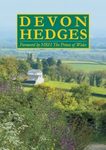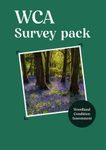![Wildlife Habitat Conservation Wildlife Habitat Conservation]()
Click to have a closer look
About this book
Contents
Customer reviews
Biography
Related titles
About this book
"Habitat" is probably the most common term in ecological research. Elementary school students are introduced to the term, college students study the concept in depth, hunters make their plans based on it, nature explorers chat about the different types, and land managers spend enormous time and money modifying and restoring habitats. Although a broad swath of people now have some notion of what habitat is-opening up ample opportunity for further education and conservation-the scientific community has by and large failed to define it concretely, despite repeated attempts in the literature to come to meaningful conclusions regarding what habitat is and how we should study, manipulate, and ultimately conserve it.
Geared towards a US audience, Wildlife Habitat Conservation presents an up-to-date review of the habitat concept, provides a scientifically rigorous definition, and emphasizes how we must focus on those critical factors contained within what we call habitat. The result is a habitat concept that promises long-term persistence of animal populations.
Key concepts and items in Wildlife Habitat Conservation include: the necessity of moving away from vague and inconsistent perspectives to more rigorous and standard conceptual definitions of wildlife and their habitat; a discussion of the essential integration of population demographics and population persistence with the concept of habitat; the importance of carry over and lag effects, behavioral processes, genetics, and species interactions to our understanding of habitat; an examination of spatiotemporal heterogeneity, realized through fragmentation, disruption to eco-evolutionary processes, and alterations to plant and animal assemblages; and, an explanation of how anthropogenic effects alter population size and distribution (isolation), genetic processes, and species diversity (including exotic plants and animals). It includes advocacy of proactive conservation and management through predictive modeling, restoration, and monitoring.
Each chapter is accessibly written in a style that will be welcomed by private land owners and public resource managers at local, state, and federal levels. Also ideal for undergraduate and graduate natural resource and conservation courses, Wildlife Habitat Conservation is organized perfectly for a one semester class.
Contents
Contributors
Preface
Acknowledgements
Part I: Foundation
1. The Misunderstanding of Habitat
2. Exploration and Critique of Habitat and Habitat Quality
3. Demographic Consequences of Habitat
4. Managing Habitats in a Changing World
Part II: Habitats in Peril
5. Habitat Loss and Degradation: Understanding Anthropogenic Stressors and Their Impacts on Individuals, Populations and Communitie
6. Population Genetics and Wildlife Habitat
7. Habitat Fragmentation and Corridors
8. The Impact of Invasive Species on Wildlife Habitat
Part III: Research and Conservation
9. Thoughts on Models and Prediction
10. Manage Habitat Monitor Species
11. The Effects of Disturbance and Succession on Wildlife Habitat and Animal Communities
12. Wildlife Habitat Restoration
13. Synthesis for Advancing Useful Knowledge of Habitat: Unifying Themes or Many Directions?
Customer Reviews
Biography
Michael L. Morrison is a professor and the Caesar Kleberg Chair of wildlife ecology and conservation at Texas A&M University. He is the author of Restoring Wildlife: Ecological Concepts and Practical Applications and the coauthor of Wildlife-Habitat Relationships: Concepts and Applications and Wildlife Study Design.
Heather A. Mathewson is a research scientist at the Texas A&M Institute of Renewable Natural Resources.
Contributors:
- William M. Block
- Kathi L. Borgmann
- J. Curtis Burkhalter
- Bret A. Collier
- Courtney J. Conway
- Clinton W. Epps
- Clinton D. Francis
- Fred S. Guthery
- Douglas H. Johnson
- Julie L. Lockwood
- Heather A. Mathewson
- Kevin S. McKelvey
- Michael L. Morrison
- Amanda D. Rodewald
- Jamie S. Sanderlin
- Michael K. Schwartz
- K. Shawn Smallwood
- Bronson K. Strickland
- Beatrice Van Horne
- Lisette P. Waits
- John A. Wiens
By: Michael L Morrison(Editor), Heather A Mathewson(Editor)
185 pages, 1 b/w photo, 11 b/w illustrations, tables
"A timely volume [...] A useful book for those interested in natural resources."
– Choice
"An excellent contribution to the understanding of what habitat is and how to conserve it."
– Conservation Biology
"In this very worthwhile book, the editors and chapter authors have accomplished the important task of setting forth a path to guide habitat management and conservation."
– Great Plains Research
"The editors of this volume accomplished their goal of reaching a broad audience and providing this audience with an understanding of the factors affecting wildlife and their habitats. The book will be most useful for wildlife students, but will also have immense utility for managers seeking to understand and address emerging habitat threats, and for researchers aiming to broaden their perspectives on the variety of factors influencing habitat."
– Landscape Ecologist
"Taken as a whole, this collection of chapters will provide a benchmark for understanding how we are to understand the global consequences of human consumption."
– Quarterly Review of Biology








































